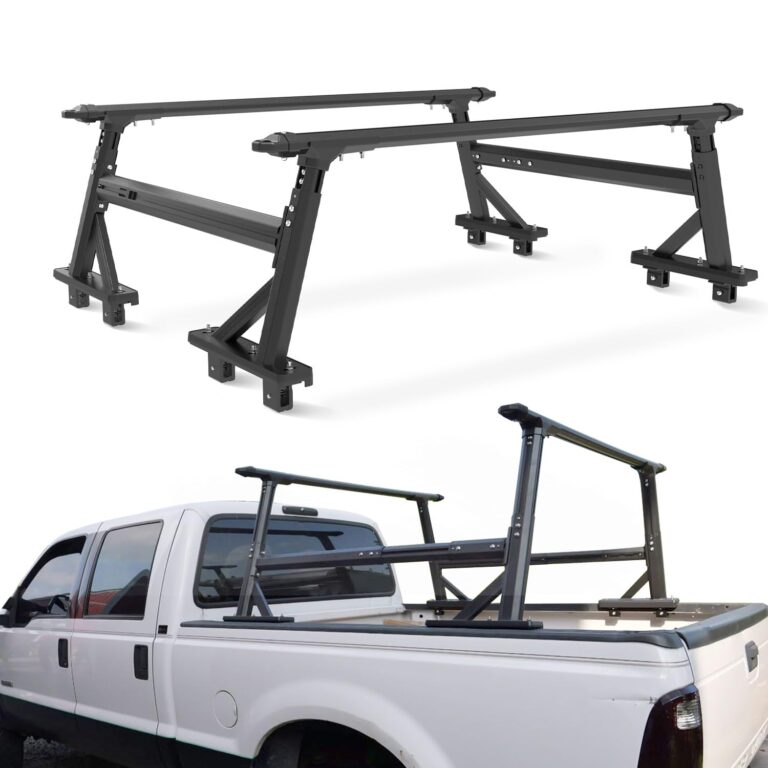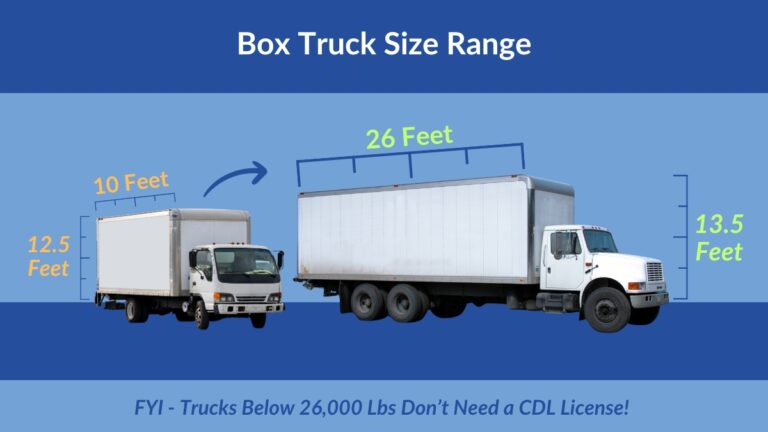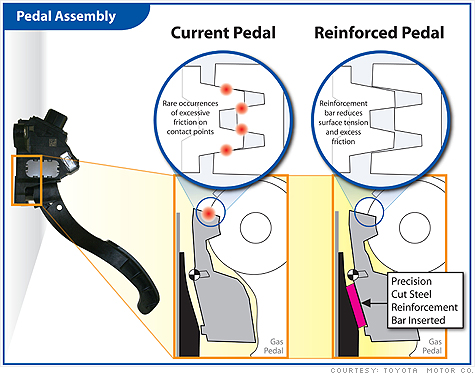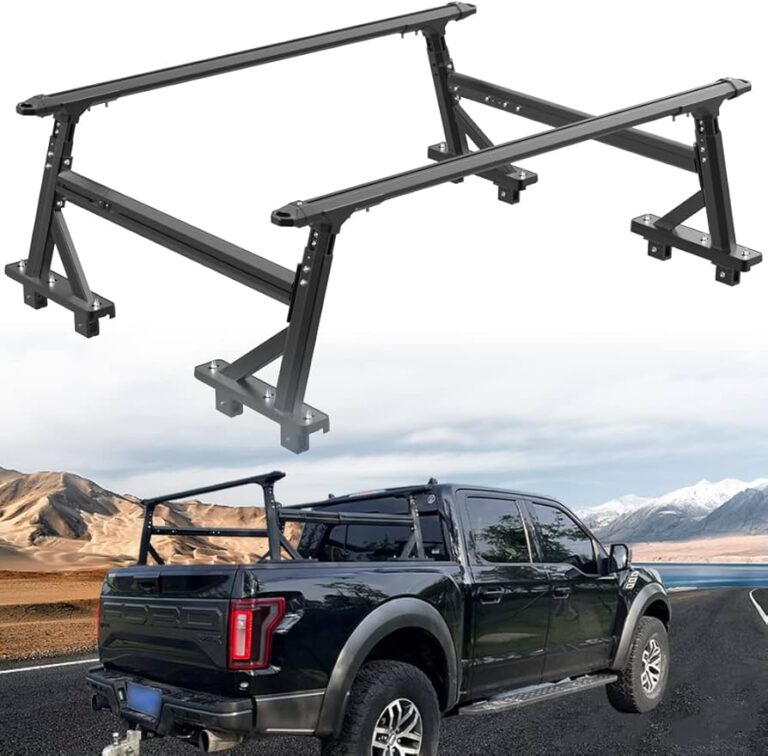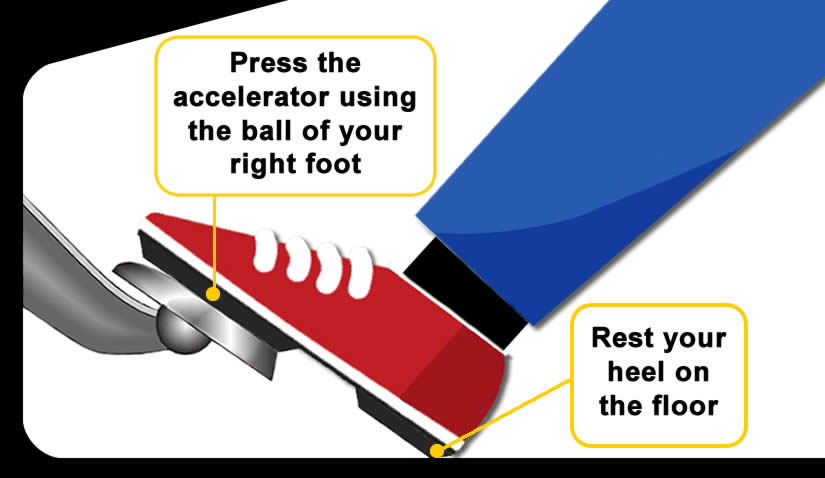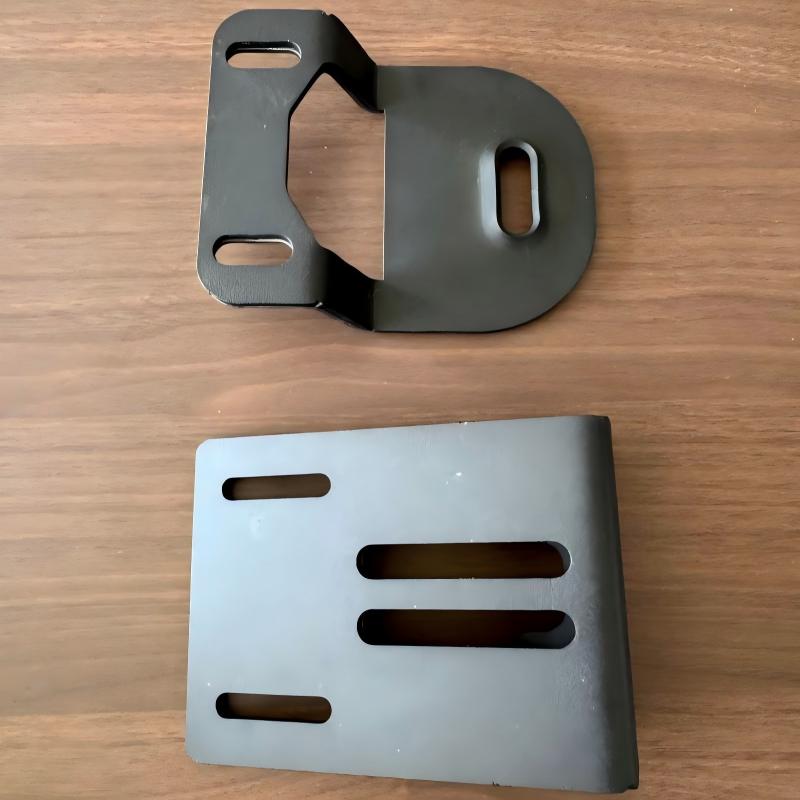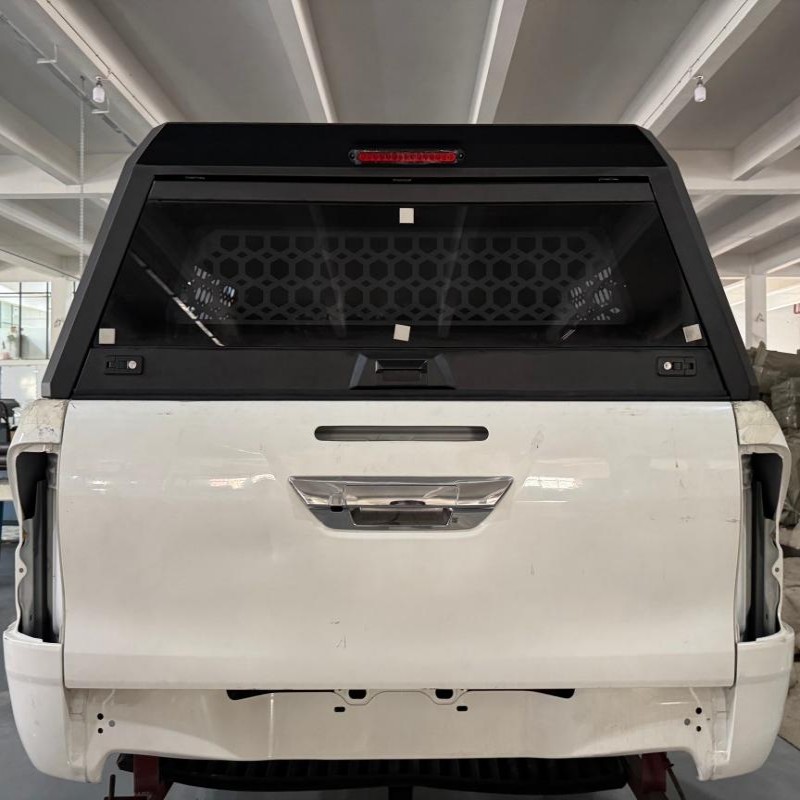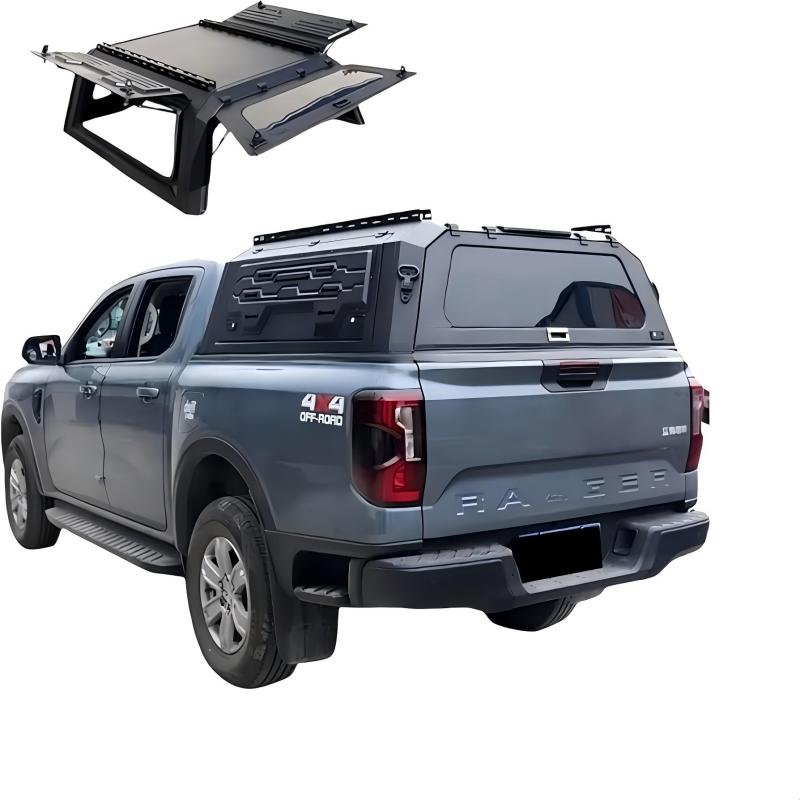-
GaoxinQu, Xingtan, Shunde, Guangdong
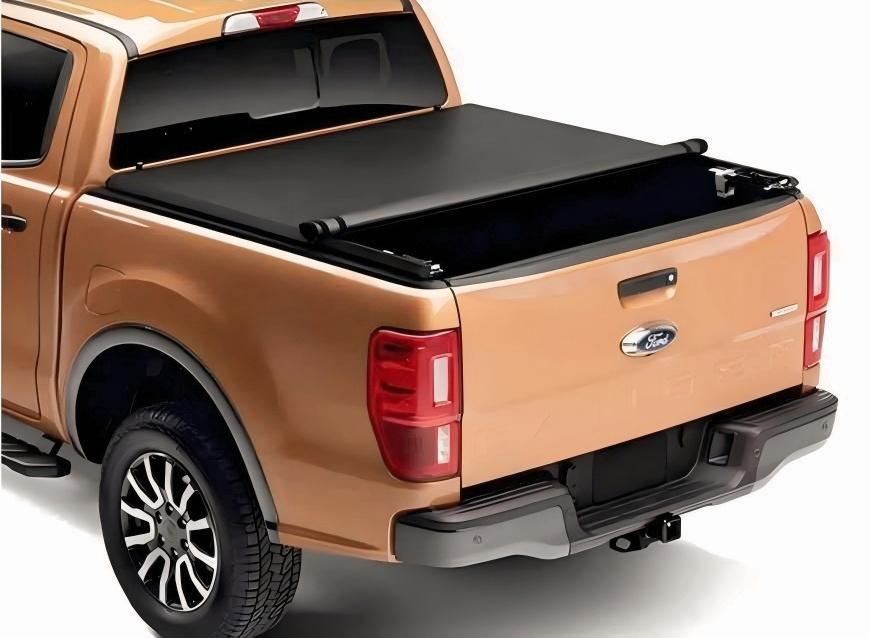
The Ultimate Guide to Pickup Truck Bed Covers: A Complete Guide to Selection, Installation, and Optimization
Table of Contents
Summary
Pickup truck bed covers (also known as pickup truck canopies) are key accessories that enhance vehicle practicality, safety, and aesthetics. This article will systematically analyze 10 core dimensions, covering type selection, material comparison, installation methods, maintenance tips, and cost-effectiveness evaluation, to help you choose the best solution based on your needs. From hardtop anti-theft to softtop convenience, from fuel efficiency improvement to multi-functional modification, we will provide professional insights and practical suggestions.
1. Core definition and terminology analysis of pickup truck bed covers
Point: Clearly distinguish the terminology difference between “bed cover” and “canopy” Argument:
- Truck Bed Cover: Refers to all accessories covering the cargo box, including simple waterproof cloth
- Truck Cap/Canopy: Refers specifically to a fully enclosed structure, often with side windows and tailgate (such as ARE MX series)
- Industry Standard: SAE J2748 specification clearly states that canopies must meet aerodynamic and load safety requirements
2. Comparison and applicable scenarios of five major types of bed covers
Different types of bed covers meet differentiated needs Argument:
| Type | Representative Products | Advantages | Disadvantages |
|---|---|---|---|
| Hard folding cover | BakFlip G2 | High security, can bear 400 pounds | Covers rear window when open |
| Soft roll-up cover | TruXedo Pro X15 | Lightweight, cheap, quick to install | Can be easily cut by knives |
| Retractable canopy | RetraxPRO MX | Sectional opening/closing, compatible with cargo racks | Takes up 15% of cargo space |
| Tri-fold cover | Extang Solid Fold | Fully removable, does not affect vision | Poor sealing |
| Fully enclosed canopy | Leer 100XR | All-weather protection, can equip camping gear | Expensive ($2500+) |
3. Material Science: From Polyethylene to Carbon Fiber
Argument: Material determines product life and performance Argument:
- Fiberglass: Leer’s common material, impact-resistant but easy to fade (UV test fades 12% after 2000 hours)
- Aluminum alloy: DiamondBack only, with a load capacity of over 2000 pounds, but strong thermal conductivity
- Composite material: SmartCap uses a steel and aluminum hybrid structure, reducing weight by 30% while maintaining strength
- Innovative material: CarbonPro carbon fiber canopy (weighing only 18kg), priced at $5000+
4. Quantitative evaluation of safety performance
Argument: Anti-theft design needs to pay attention to professional certification Argument:
- Lock standard: It is recommended to choose a lock body certified by ANSI/BHMA A156.5
- Destruction test:
- Average prying time for hard cover: 4 minutes and 32 seconds (compared to 22 seconds for soft cover)
- Steel cable reinforced edges can increase cutting resistance by 300%
- Insurance discount: Some insurance companies provide a 5% premium reduction for canopies certified by Thatcham
5. Aerodynamics and fuel efficiency
Argument: Reasonable design can reduce fuel consumption Argument:
- Wind tunnel data:
- Flat roof design reduces wind resistance by 7.2% (EPA test F-150 fuel consumption reduced by 0.8L/100km)
- Streamlined canopy (such as SnugTop SnugLite) reduces wind noise by 4 decibels
- Actual case: Ram 1500 increases high-speed range by 5% after installing Retrax
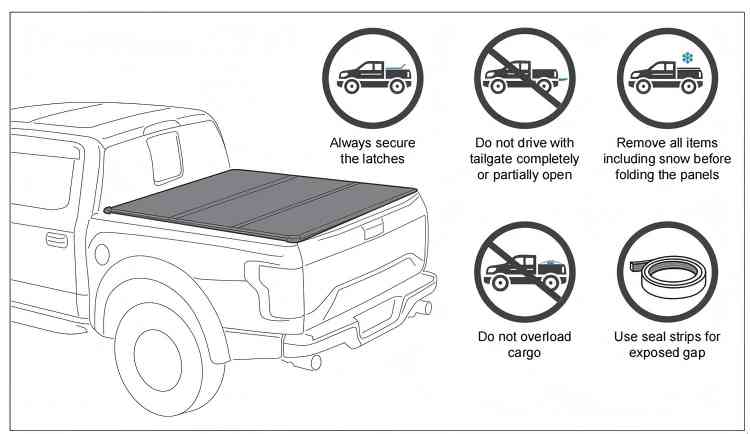
6. Engineering considerations for installation methods
Argument: Professional installation avoids structural risks Argument:
- Bolt torque specifications:
- Aluminum alloy frame: 12-15 N·m
- Steel bracket: 18-22 N·m
- Common mistakes:
- 75% of water leakage problems are caused by the installation of sealing strips without preheating
- Over-torque tightening causes fiberglass cracking (critical value is 25 N·m)
7. Chemical maintenance plan
Argument: Scientific maintenance extends life by 3 times Argument:
- Cleaning agent selection:
- Fiberglass: Special cleaning agent with pH value of 7.5-8.5 (such as 303 Marine)
- Vinyl: Silicone-based protective agent (measured anti-UV aging effect increased by 60%)
- Seasonal maintenance:
- Ice chips on the sealing strips need to be removed in winter (to prevent tearing)
- Fluorine waterproofing agent should be applied before the rainy season (contact angle>110°)
8. Mathematical model of cost-effectiveness
Argument: Life cycle cost is the real cost Argument:
- 10-year total cost comparison:
- Cheap soft cover: $300 (initial) + $200×2 (replacement) = $700
- High-end hardcover: $2000 + $50 (maintenance) = $2050
- Residual value impact: A high-quality canopy can increase the value of a used car by $800-$1500 (KBB data)
9. Modification potential and innovative applications
Argument: The canopy is a platform for functional expansion Argument:
- Camping modification:
- Add a roof tent (need to verify dynamic load ≥150kg)
- Integrate 200W solar panels (such as Alu-Cab Shadow Awning)
- Work solutions:
- Built-in sliding rail tool cabinet (Decked system compatibility)
- Drone take-off and landing platform (flatness error <3mm required)
10. Regulatory compliance points
Argument: Legal modifications need to pay attention to three major standards Argument:
- Vision requirements: The rear window viewing area must not be reduced by more than 30% (FMVSS 111)
- Emission impact: Some states require reporting of aerodynamic modifications (such as California AB1824)
- Load label: The GVWR label must be updated after modification (required for DOT certification)
FAQS
1.Q: What’s the most secure type of truck bed cover?
A: Hard folding covers (like BakFlip G2) offer the best security with 4+ minute forced-entry resistance and 400lb load capacity.
2.Q: Which material is best for coastal areas?
A: Fiberglass canopies (Leer 100XR) with marine-grade coatings provide optimal saltwater corrosion resistance.
3.Q: How much fuel can I save with a bed cover?
A: EPA tests show 0.8L/100km improvement with aerodynamic designs (7.2% reduced drag).
4.Q: What’s the lightest premium option?
A: CarbonPro carbon fiber canopies weigh just 18kg while maintaining structural strength.
Summary
Choosing a pickup truck bed cover is a decision that combines engineering, economics and personalized needs. Hard tops are suitable for users who focus on safety, while soft products win with lightness; those who pursue fuel efficiency should choose streamlined designs, and those who need multi-functionality need to evaluate the modification potential. It is recommended to give priority to SAE or Thacham certified products and keep complete installation records to protect warranty rights. In the end, a bed cover that matches the usage scenario is the best solution.

